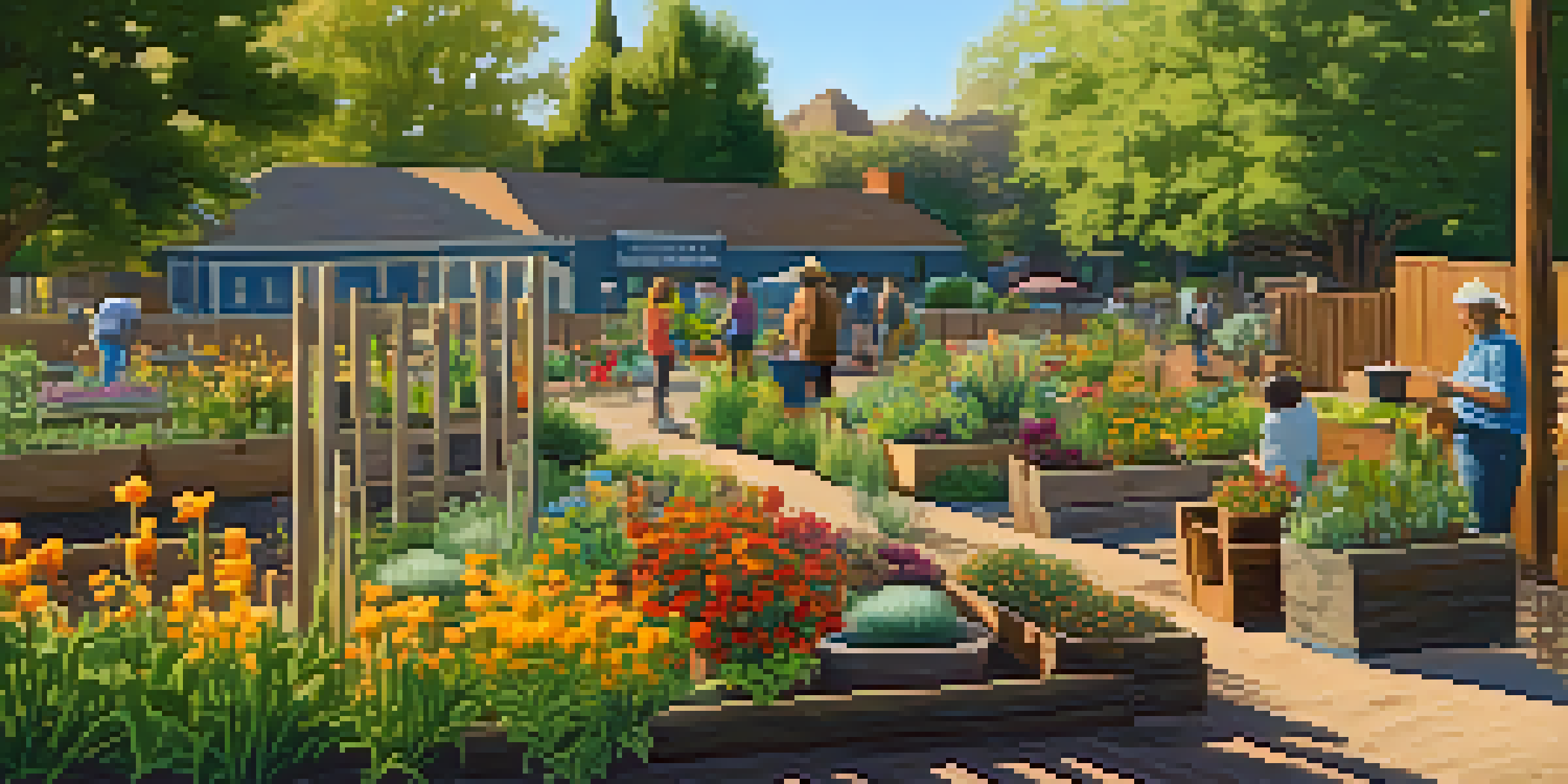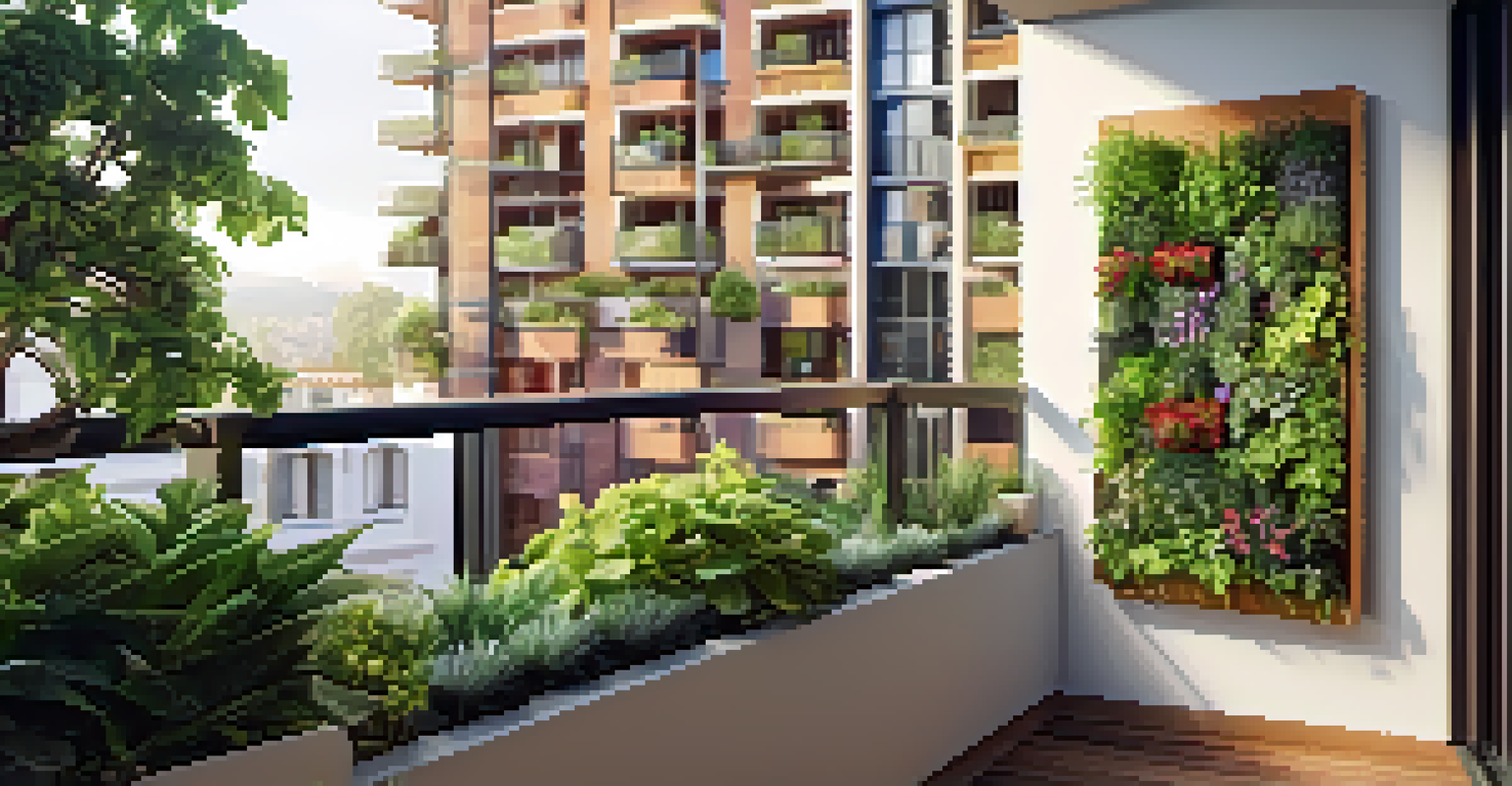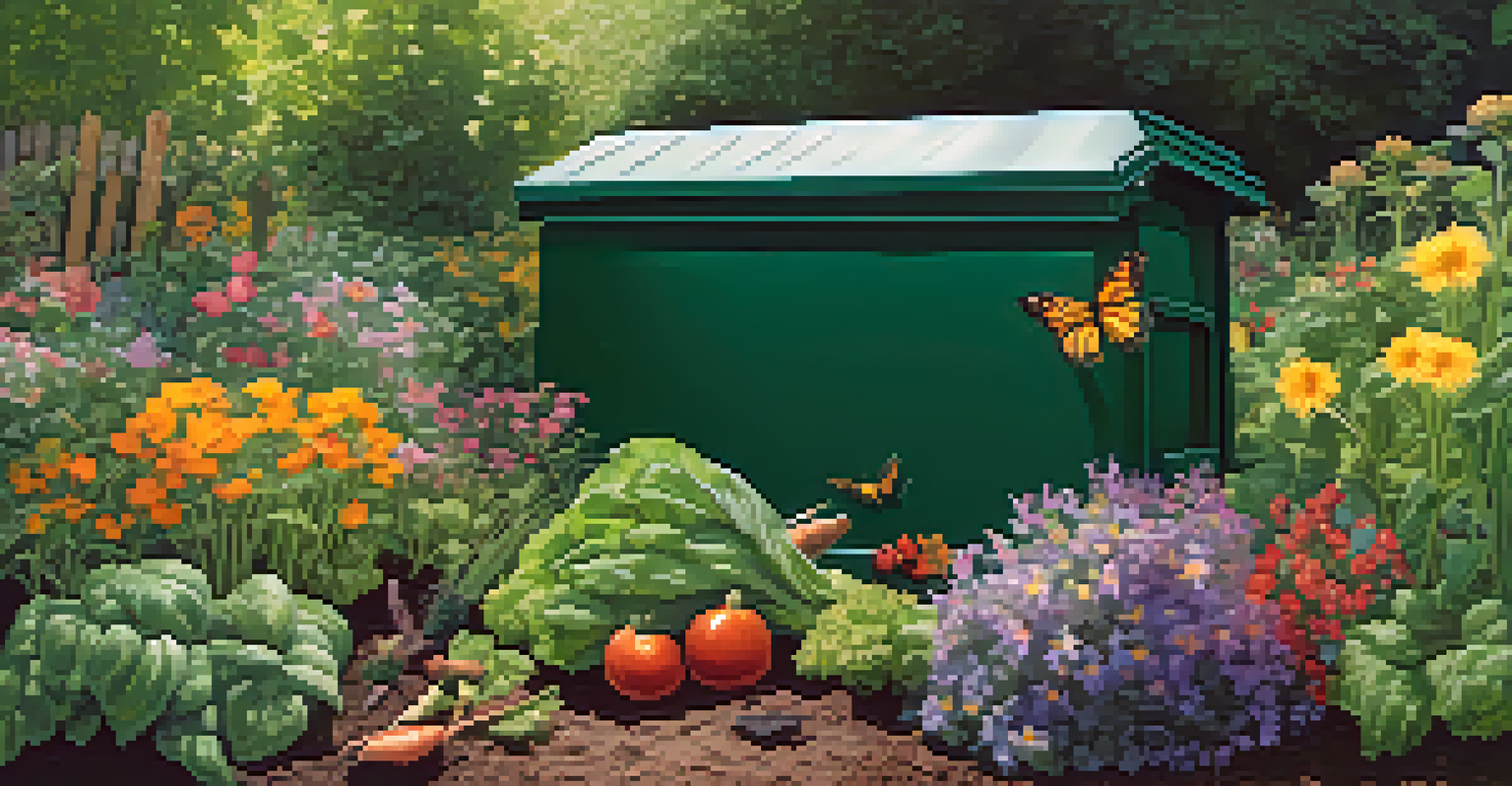Sustainable Practices in Sacramento's Garden Design Trends

The Rise of Sustainable Gardening in Sacramento
In recent years, Sacramento has become a beacon for sustainable gardening. Residents are increasingly realizing the benefits of eco-friendly practices, not just for the environment but also for their personal well-being. This shift reflects a broader trend towards sustainability, as more people seek to live in harmony with nature.
The greatest gift you can give to the planet is a healthy garden.
Local garden designers are incorporating native plants, which require less water and are better suited to the region's climate. By opting for these varieties, homeowners can create beautiful landscapes that thrive naturally, reducing the need for synthetic fertilizers and pesticides. This approach not only supports the ecosystem but also promotes biodiversity in urban settings.
As a result, sustainable gardening practices are not just a trend; they are becoming a way of life for many Sacramento residents. Community workshops and educational initiatives are popping up, helping to spread awareness and encourage more people to embrace sustainable gardening techniques.
Incorporating Native Plants for a Greener Impact
One of the most effective sustainable practices in Sacramento's gardens is the use of native plants. These plants have adapted to the local climate and soil conditions, making them more resilient and easier to maintain. For example, California poppies and manzanita are not only beautiful but also support local wildlife.

By choosing native species, gardeners can significantly reduce their water consumption, which is especially vital in California's often dry climate. Native plants are more drought-tolerant, meaning they require less irrigation once established, helping homeowners save on water bills while contributing to water conservation efforts.
Embracing Native Plants
Using native plants in Sacramento gardens enhances resilience, reduces water consumption, and supports local wildlife.
Moreover, native plants create habitats for local pollinators like bees and butterflies, fostering a thriving ecosystem right in your backyard. This connection to nature enhances the overall aesthetic and ecological value of Sacramento's gardens.
Water-Saving Techniques for Sustainable Gardens
Water conservation is a critical aspect of sustainable gardening, especially in regions like Sacramento that face drought conditions. Techniques such as drip irrigation systems allow for precise watering, ensuring that plants receive just the right amount of moisture without waste. This method minimizes runoff and evaporation, making it a smart choice for eco-conscious gardeners.
To plant a garden is to believe in tomorrow.
Rainwater harvesting is another innovative practice gaining popularity. By installing rain barrels, homeowners can collect and store rainwater, which can later be used to water gardens. This not only conserves precious water resources but also reduces dependence on municipal water supplies.
Additionally, incorporating mulch in garden beds helps retain soil moisture and suppress weeds, further enhancing water efficiency. These methods collectively contribute to a more sustainable gardening approach, allowing Sacramento residents to nurture their landscapes while being mindful of water usage.
Creating Wildlife-Friendly Spaces in Your Garden
A sustainable garden is not just about plants; it's also about creating a welcoming environment for wildlife. Incorporating features like birdhouses, bee hotels, and butterfly gardens can transform your outdoor space into a sanctuary for various species. This approach encourages biodiversity and promotes ecological balance in urban settings.
Using organic gardening methods can also help protect local wildlife. By avoiding harmful pesticides and opting for natural pest control methods, gardeners can create a safer habitat for beneficial insects and animals. For instance, introducing ladybugs can help manage aphid populations without chemicals.
Water Conservation Techniques
Implementing methods like drip irrigation and rainwater harvesting helps Sacramento gardeners save water and promote sustainability.
Moreover, planting a variety of flowers that bloom at different times ensures that food sources are available for pollinators throughout the growing season. This dynamic ecosystem not only enriches the garden's beauty but also enhances its ecological health.
The Role of Composting in Sustainable Gardening
Composting is a cornerstone of sustainable gardening, offering a practical way to recycle organic waste. By creating a compost bin, Sacramento residents can transform kitchen scraps and yard waste into nutrient-rich soil amendments. This process not only reduces landfill waste but also enriches garden soil naturally, promoting healthier plant growth.
Using compost enhances soil structure, improves moisture retention, and provides essential nutrients to plants without the need for chemical fertilizers. As gardeners incorporate compost into their practices, they often notice improved plant health and resilience, making it a win-win for both the environment and their gardens.
Furthermore, composting fosters a deeper connection with the gardening process. As you witness the transformation of waste into valuable resources, it reinforces the principles of sustainability and encourages a more mindful approach to gardening.
Vertical Gardening: Maximizing Space Sustainably
With urban living spaces often limited in size, vertical gardening has emerged as a popular trend in Sacramento. This method allows gardeners to maximize space by growing plants upward rather than outward. From wall-mounted planters to trellises, vertical gardens can be both aesthetically pleasing and functional.
Vertical gardening not only optimizes limited space but also improves air circulation and sunlight exposure for plants. This can lead to healthier growth and increased yields, especially for vegetables and herbs. Plus, they can add visual interest to small balconies or patios, turning any area into a lush green oasis.
Community Gardens Thrive
Community gardens in Sacramento foster collaboration, skill-sharing, and access to fresh produce while promoting sustainable practices.
Additionally, vertical gardens can be designed using sustainable materials, such as reclaimed wood or repurposed containers. This commitment to sustainability further enhances the environmental benefits of this gardening trend, making it a favorite among eco-conscious Sacramento residents.
Community Gardens: A Hub for Sustainable Practices
Community gardens are flourishing in Sacramento, providing residents with a space to come together and practice sustainable gardening. These collaborative spaces allow individuals to grow food, share resources, and learn from one another. They foster a sense of community while promoting environmental stewardship.
Participating in a community garden often comes with shared knowledge and experience, helping both novice and seasoned gardeners improve their skills. Workshops on composting, native plants, and water conservation are frequently held, encouraging sustainable practices among participants.

Moreover, community gardens contribute to local food security by providing access to fresh produce. This not only helps reduce the carbon footprint associated with transporting food but also strengthens community bonds, making these gardens vital resources in Sacramento's commitment to sustainability.